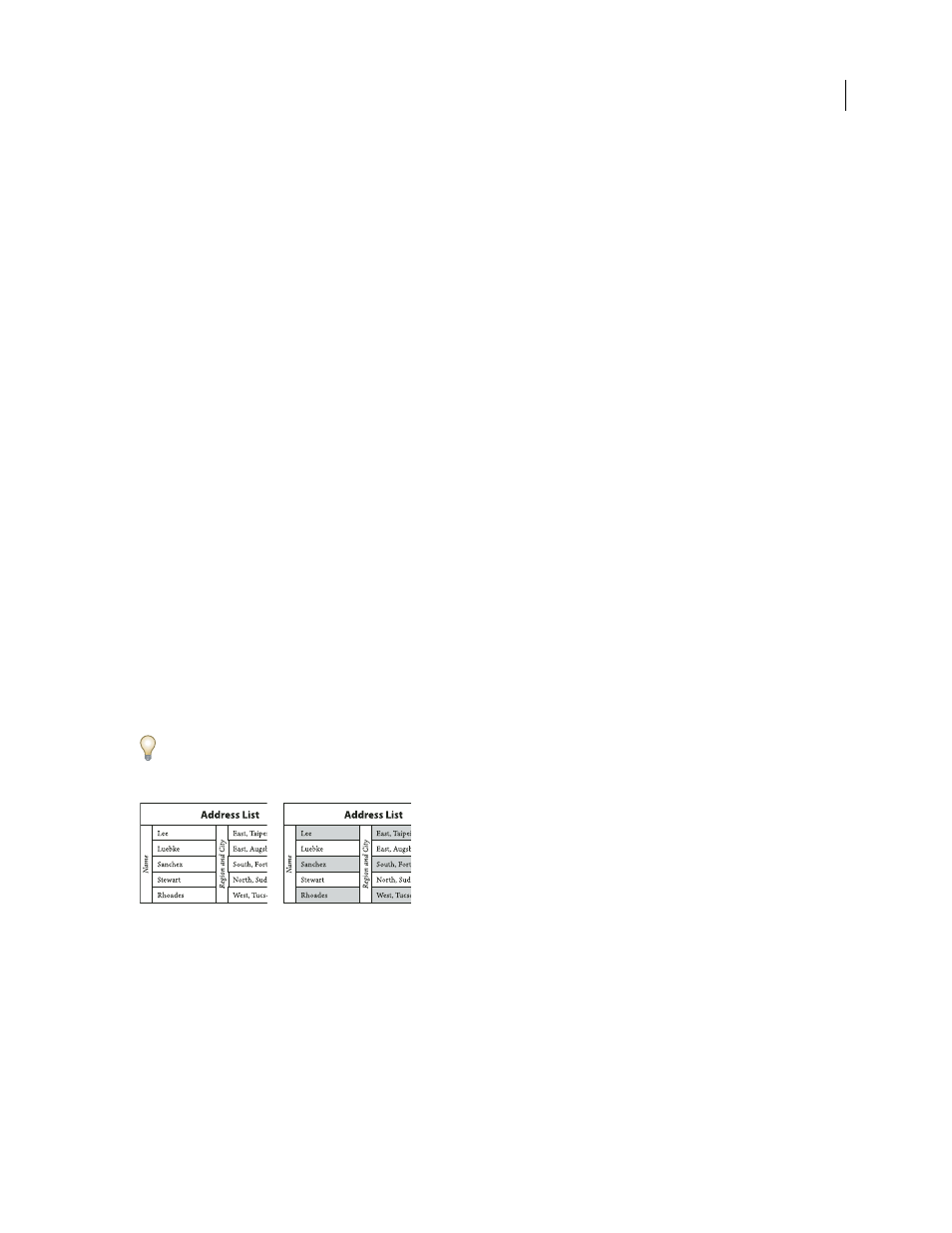Table stroke and fill options, Alternate strokes and fills in a table – Adobe InDesign CS3 User Manual
Page 274

INDESIGN CS3
User Guide
267
4
Under Line Stroke, specify desired weight, type, color, and gap settings; specify a Tint percentage and Overprint
options.
5
From the Draw menu, choose Diagonal In Front to place the diagonal line in front of the cell contents; choose
Content in Front to place the diagonal line behind the cell contents, and then click OK.
Table stroke and fill options
When selecting strokes and fills for the table or cells, use the following options:
Weight
Specifies the line thickness for the table or cell border.
Type
Specifies the line style, such as Thick - Thin and Solid.
Color
Specifies the color of the table or cell border. The choices listed are those available in the Swatches panel.
Tint
Specifies the percentage of ink of the specified color to be applied to the stroke or fill.
Gap Color
Applies a color to the areas between the dashes, dots, or lines. This option is not available if Solid is
selected for Type.
Gap Tint
Applies tint to the areas between the dashes, dots, or lines. This option is not available if Solid is selected
for Type.
Overprint
When selected, causes the ink specified in the Color drop-down list to be applied over any underlying
colors, rather than knocking out those inks.
Alternate strokes and fills in a table
You can alternate strokes and fills to enhance readability or improve the appearance of your table. Adding alternate
strokes and fills to table rows does not affect the appearance of the table’s header and footer rows. However, adding
alternate strokes and fills to columns does affect header and footer rows.
Alternating stroke and fill settings override cell stroke formatting, unless you select the Preserve Local Formatting
option in the Table Options dialog box.
If you want to apply a fill or stroke to every body cell in the table, and not just alternating patterns, you can still use
the alternating stroke and fill settings to create such non-alternating patterns. To create such an effect, specify 0 for
Next in the second pattern.
Before (left) and after (right) alternating fills in a table
Add alternating strokes to a table
1
With the insertion point in the table, choose Table > Table Options > Alternating Row Strokes or Alternating
Column Strokes.
2
For Alternating Pattern, select the type of pattern you want to use. Select Custom if you want to specify a pattern;
for example, one column with a thick black line followed by three columns with thin yellow lines.
